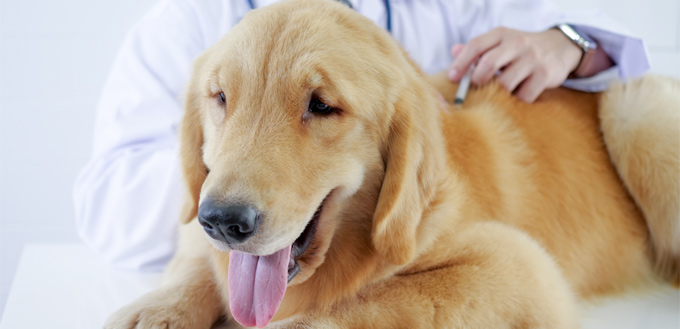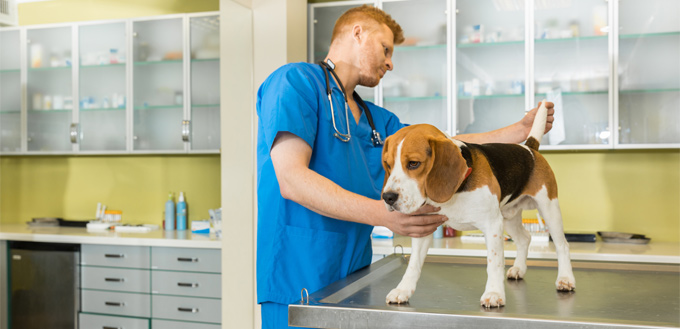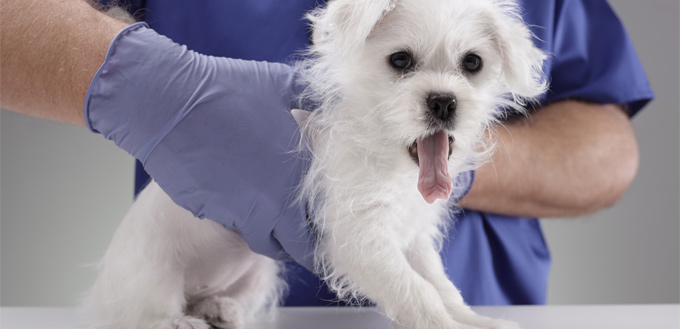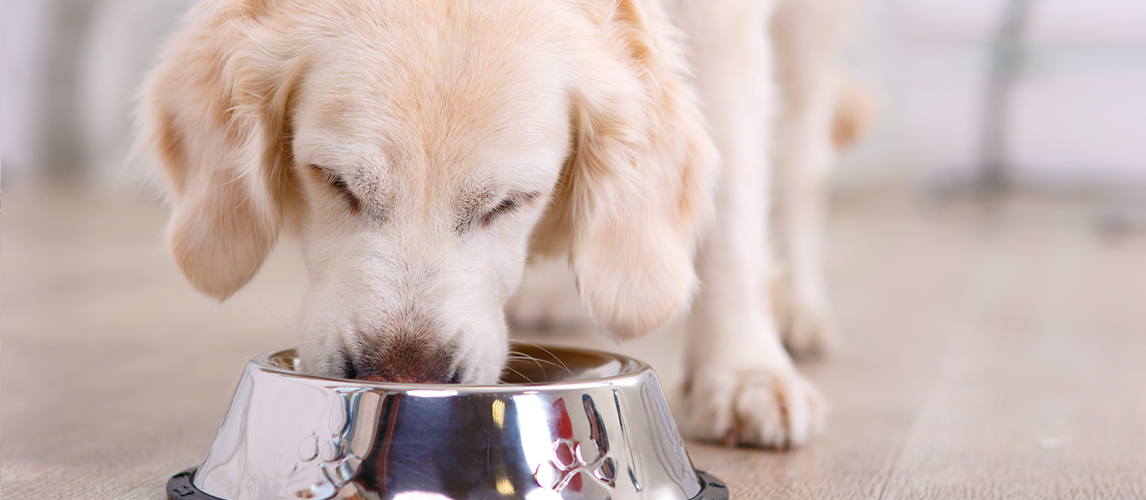Receiving a diagnosis of any type of disease in your pooch can be concerning. Perhaps your vet has just told you that your dog’s recent symptoms are due to coccidiosis? If you would like to know more about this condition and the treatment that your dog may be offered, this guide will be useful.
The Basics About Coccidiosis
Coccidiosis is an infection of the gut caused by an intestinal parasite called Coccidia. Despite the fact that it is a very simple organism and has only one cell, it can cause a lot of problems for your four-legged friend. The scientific name for the species of the parasite is Isospora and within the species, there are several different genera that can infect dogs. Your dog may be infected with Isospora canis, Isospora ohioensis, Isospora neorivolta or Isospora burrowsi. They all cause very similar symptoms and the treatment for them all is the same although Isospora canis is most likely to cause symptoms in dogs.

Coccidia is very tiny and much too small to be seen with the naked eye. They live in the lining of the intestine and get their nourishment from your dog’s body and from their food. They reproduce by producing thousands of immature coccidia called oocysts. These pass out of the infected dog with the faeces and end up in the environment wherever the dog has done a poop.
The oocysts are remarkably robust and can survive on the ground for up to a whole year in all sorts of weather conditions. When the environmental conditions are just right, the oocysts will “sporulate” which means that they enter a state that allows them to infect another dog. The ideal conditions for this to happen are moist, with plenty of oxygen and warmer temperature.
If the sporulated oocysts are swallowed by a dog, they release sporozoites which enter the intestines and invade the lining of the gut. Within three to five days, they have established infection and the whole cycle starts all over again.
How Did Your Dog Become Infected?
To become infected, your dog must have swallowed sporulated oocysts and this can happen in a number of different ways:
- Contamination in the environment. Dogs can ingest the coccidia oocysts from anything in the environment that is contaminated with the faeces (poop) of another dog. This can be just about anything! It could be contaminated soil, toys, balls, grass or sticks.
- Infected rodents. Mice and other rodents can carry coccidia. If your dog has been out hunting and eaten a small mammal, that could be the source of their infection.
- Infected insects. Cockroaches and flies can carry the infection from one part of the environment to another. Effective insect control is a good way of helping to prevent coccidia infections.
- Contaminated food or drink. Sometimes dog poop can get into food and water bowls. This is especially likely to happen if several dogs share a food bowl. Other dogs using that bowl can become infected.
- Crowded conditions. Where there are a lot of dogs living in close proximity, the opportunities for faecal contamination of the environment and food and water is increased. For that reason, coccidiosis is especially prevalent in dog shelters, puppy mills and busy breeding kennels.
- A more susceptible dog. Puppies are more likely to become infected with coccidia because their immune systems are not fully developed. They become even more susceptible when they are under stress such as during weaning or when they are first separated from their mother.
Related Post: Dog Bowls
Symptoms of Coccidiosis in Dogs
The surprising thing is that many coccidiosis infections in dogs do not cause any symptoms at all. These are called sub-clinical infections. Most older dogs have developed a natural immunity to the infection and do not get symptoms. Sadly, the dog is still capable of shedding oocysts and infecting other dogs even though they are not ill themselves.
When coccidia does cause symptoms, these are the most common:
- Diarrhoea that is explosive, watery and has mucous in it
- Diarrhoea with blood in it
- Lethargy
- Weakness
- Dehydration
- A tender abdomen
- Vomiting
- Loss of appetite
- Loss of weight
Any dog with these symptoms requires immediate veterinary attention.

Coccidiosis in Puppies
Coccidiosis is especially common and dangerous in puppies under six months old and in dogs that are already debilitated because they have another illness or condition. In elderly or ill dogs and in very young pups it can be fatal.
Puppies do not have a fully developed immune system and so they cannot fight the infection themselves. A pup is not born with coccidia. They contract it from their mother’s faeces sometime after birth. It takes a couple of weeks for the infection to get established in their gut and to start causing symptoms. So, if a pup is infected immediately after birth, they will start to show symptoms when they are around two weeks old. Pups aged between four and twelve weeks are most likely to suffer from coccidiosis.
The symptoms are so severe in pups because their lack of immune defence against the coccidia allows the protozoa to multiply to huge numbers. This causes a big disruption in the pup’s intestines and the symptoms are severe. Infected pups can soon infect others and so in breeding facilities, it is best to isolate them.
A stressed pup is more likely to develop symptoms. A typical scenario is for a seemingly healthy pup to develop symptoms a few days after arriving in their new home and for them to be diagnosed with coccidia. If you have had your pup for less than 13 days, it means that they arrived with the infection. However, if you have had your pup for longer than this, it means that they have been infected in your home, by one of your other dogs or from the environment that they have been exposed to.
Diagnosing Coccidiosis
Only a vet can make a diagnosis of coccidiosis. If your dog has symptoms that could be a coccidia infection, when you take them to a vet you will be asked some questions. Your vet will want to know the exact symptoms that your pooch has suffered, when they started and if they are getting better or worse. There will be a physical examination and then your vet will arrange some further tests.
You will probably be asked to collect a sample of your dog’s poop and you will be given a special container. This is not the most pleasant job but it is necessary! A fresh sample is needed so you need to get it to your vet as soon as you can.
A test will be carried out to look for coccidia in your dog’s poop; it’s called a faecal flotation test. The poop is mixed with a special solution (faecal zinc sulphate) that makes the oocysts float to the top. The liquid at the top of the sample is smeared onto a glass slide and examined under a microscope to see if any oocysts are present.
Blood tests can also be used to diagnose infections and pups and older dogs may also need to be tested for anaemia which is a secondary condition to coccidiosis.
The presence of coccidia oocysts in the faecal sample does not necessarily mean that coccidiosis is the cause of the symptoms. There could be another cause (other infections, stress, allergies) and the presence of coccidia could just be coincidental.
Treating Coccidiosis in Dogs
The treatment of choice will depend on the severity of symptoms. In very mild cases, your dog can be treated at home with appropriate medication. An oral antibiotic called sulfadimethoxine is known to be highly effective. The dose could be given for anything between five and twenty days and it may need to be repeated. The treatment does not kill the coccidia. It just stops them from being able to reproduce and their numbers in the gut are reduced. This also the dog’s own immune system to fight them and eliminate them.
If it has still not worked, there are other treatments that can be tried. It is vital that you complete the course of any medication your dog is prescribed by your vet, even if they seem to be recovered. The infection could still be there and they need the whole course to get rid of it. Discuss any side-effects with your vet who may be able to switch your dog’s medication. It is vital that they do not get dehydrated so always provide plenty of fresh water.
If necessary, your pooch will be given antidiarrheal medication to help their symptoms whilst the antibiotics are working. Very ill dogs will need to be admitted so that they can be hydrated and treated effectively.
At the end of the treatment, another faecal sample needs to be tested to make sure that all of the coccidia have gone. If your pooch has gone off their food during their illness, it is best to gradually increase their food intake when they are recovered. Several small meals a day may suit them better at this stage.
Preventing Re-Infection
Unfortunately, your dog can become re-infected immediately after treatment so you need to take precautions to prevent this from happening.
It is important that all dogs in the household are treated at the same time and that includes those dogs who do not have any symptoms. They could have a subclinical infection and could be carrying the infection. This is the only way to effectively prevent coccidia from being transmitted from one of your dogs to another in a never-ending cycle!
You will also need to isolate the infected dog whilst they are being treated and until they have been given the all-clear by your vet. Keep them away from all other dogs during this time. Clean up their poop immediately and very thoroughly to try to cut down on contamination in your yard or garden. Remember that oocysts can survive for up to 12 months out in the environment and even withstand frost!
A strict cleaning routine must be introduced. All of the dog crates, water bowls, feeding bowls, feeding mats, dog beds, and bedding will need to be disinfected. If they are made of materials that cannot be effectively cleaned, they will need to be discarded and replaced. The floor surface in your home could also be contaminated with oocysts.
Related Post: Dog Food Mat
Coccidia oocysts are resistant to most domestic disinfectants so you will have to use bleach for cleaning. Make up a dilute solution of bleach by mixing 250 ml of bleach with 3.8 litres of water. Not all floor surfaces can be cleaned with bleach so it is important that you test a small patch first. Bleach can cause a lot of damage to some floor surfaces so be very careful. A 10 percent ammonia solution is also known to kill coccidia.
For any surfaces that cannot be disinfected with bleach, steam cleaning is another effective option. Steam will kill the oocysts but you also need to check that it will not damage any floor surfaces in your home.
You need to keep up the routine of immediately removing your dog’s poop and of regular disinfection throughout your dog’s treatment and until they have been given the all clear that they are no longer infected.

Risks to Human Health
You may have some concerns that coccidia presents a risk to the humans in your household, especially if you have a young family. You do not need to be concerned because the species of coccidia that infect dogs are harmless to humans. However, a pup or an adult dog with diarrhoea could also be carrying other micro-organisms such as Cryptosporidium, Salmonella, and Campylobacter. These can all be transmitted to humans and can cause very nasty illnesses especially in young children. Therefore, it is essential that you properly dispose of dog poop and are very careful about cleaning within your home in order to keep all of the family.
Sources:
- Debbie Stoewen DVM, Coccidiosis in Dogs, VCA Hospitals
- Grace Park, Coccidia in Dogs, Wag Walking







